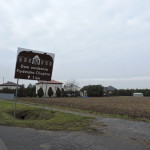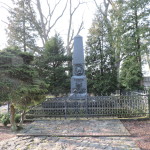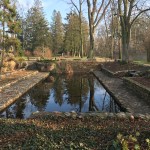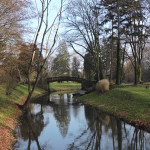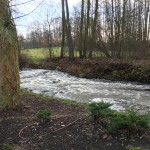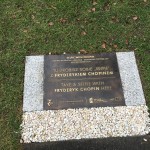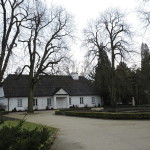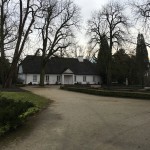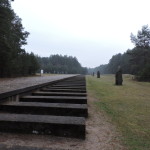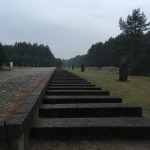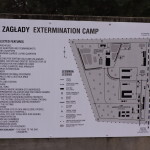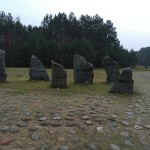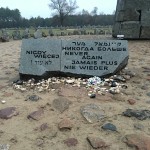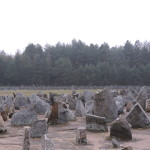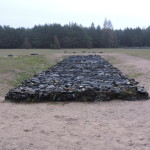On our second day we were going to head down to Krakow, but we decided that it would not be a good idea.
Instead, we decided that we would go to Żelazowa Wola to Dom Urodzenia Fryderyka Chopina and then to Płock. On our way to the Chopin house, we decided that Płock would not be a good idea.
Jamie mentioned that she had been reading up about Treblinka and that we should go there instead. We both decided that going there would be better than going to Płock.
Save yourself some money and just visit the gardens
The house isn’t the real house or even a replica of the house.
The gardens were really nice. We managed to get to them when there was a bit of sun.
The gardens were fairly large with several lakes and plenty of trees. If you head out this way, the gardens are well worth a visit. Just skip the house.
Jamie and I decided to do the house and gardens and the house was pretty much rubbish. They had 4 workers on duty and the accosted us for our ticket as soon as we entered the house. As we were walking around, we were followed by a security guard type guy. Not sure if he thinks we were casing out the joint or not, but it was uncomfortable.
Read more about Chopina here
Here are some pictures from the visit.
The journey was about 2 hours from Żelazowa Wola and we were battling against the fading light. The sat nav took us the scenic route i’m sure of it. Near to the camp, it wanted us to go down a cycle path. I’m pretty sure it needs to be updated!
As we got to the camp, the light was starting to fade. We drove right up to Treblinka II – the extermination camp.
Treblinka is perhaps the saddest aspect of the war. It was here that 800,000 people (mostly Jews) from Austria, Belgium, Czechoslovakia, France, Germany, Greece, Poland, the Soviet Union and Yugoslavia were sent to their deaths – there are stones to show this. It was built purely as an extermination camp.
The Nazi’s built a railway branch line straight to the camp. They disguised a storehouse as a train station so as to hide the massacres unfolding at the site. They conveniently located it in the middle of a forest. Jamie and I wondered if the people of the nearby town knew what was going on.
The current site is just a memorial with a museum. We were too late for the museum, so we wandered around the site. It was too dark for us to head to Treblinka I – The labour camp.
The site has concrete slabs that show the railway into the camp and also the platform – albeit just a shell of what it was.
The camp is surrounded with boulders that mark the borders of it. It also has stones laid out in a circle that show the towns and villages where the victims came from – there are 1700 stones in total.
There is a large stone located in the camp that is meant to represent a Jewish tombstone. There is also a larger rectangular set of stones that show where the cremation pit was located.
The Nazi’s dismantled the camp and burned the bodies to hide evidence of the massacres that took place at the site.
Read more about Treblinka here
View some of our pictures below.
